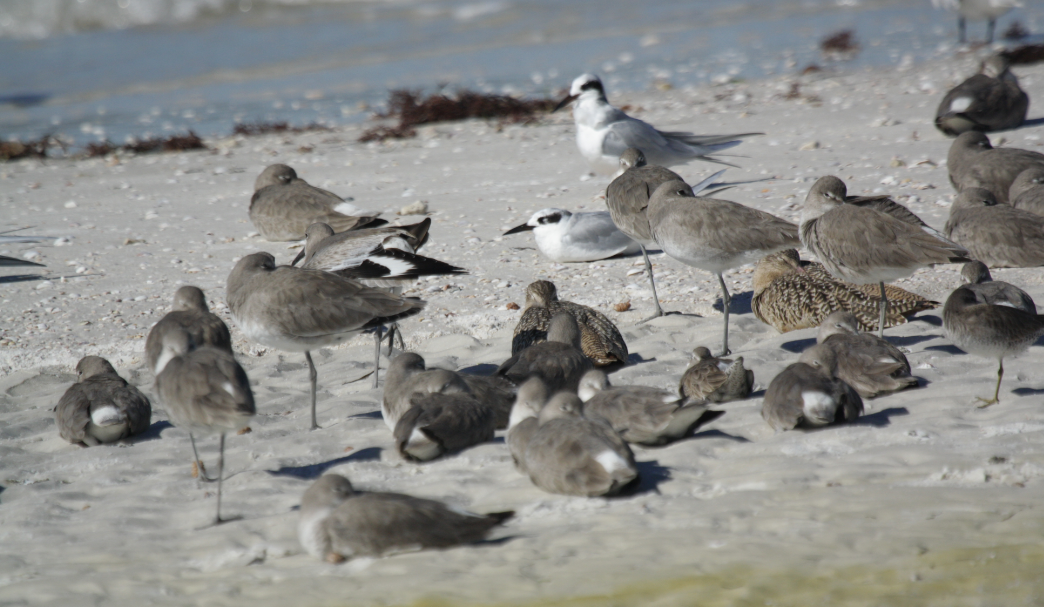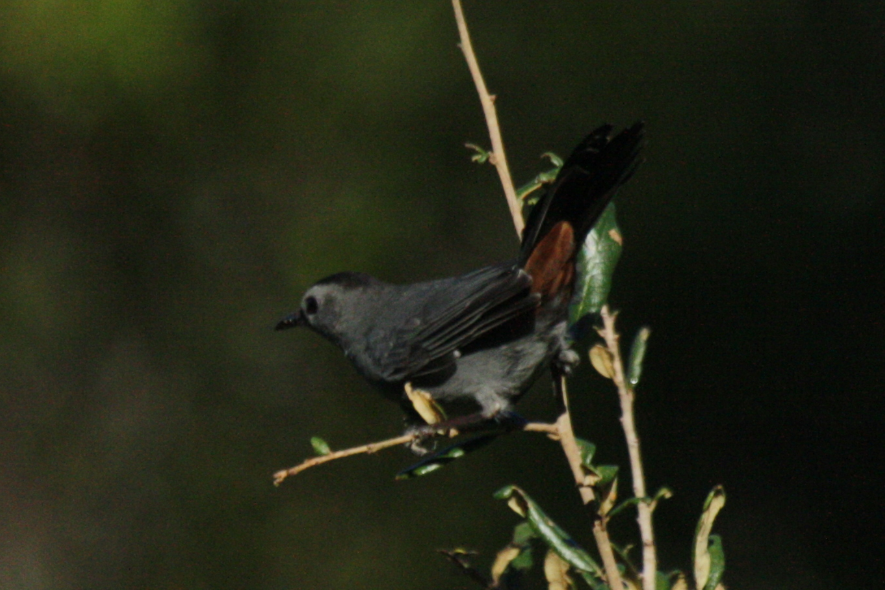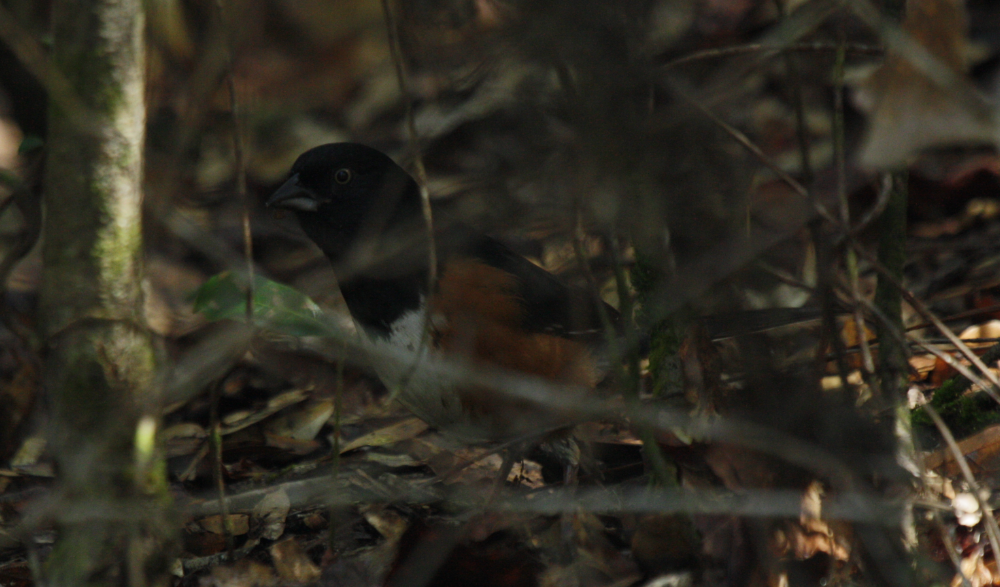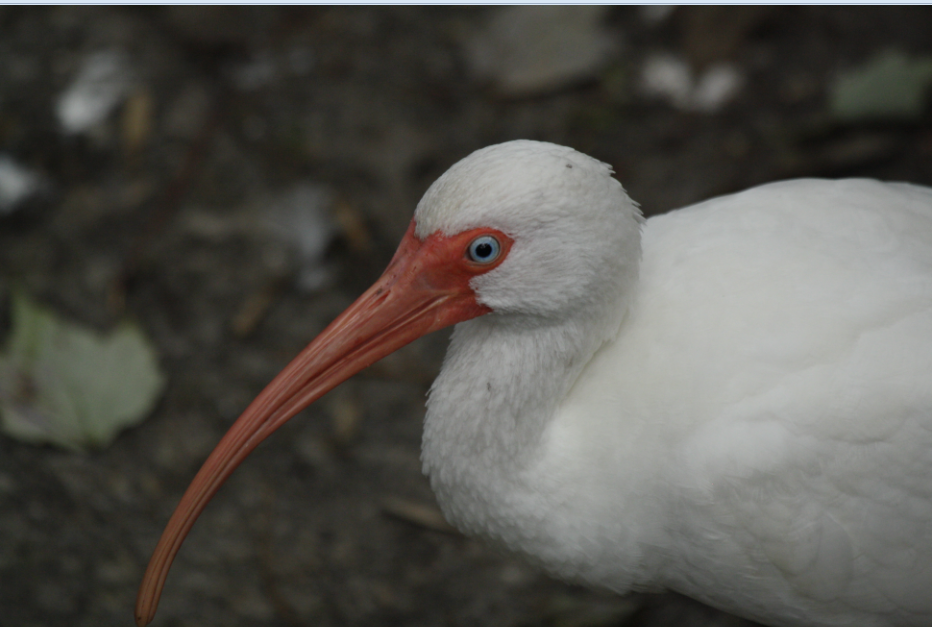As a "western" birder from California, the eastern state of Florida had a lot of potential for interesting bird sightings and nature in general. An odd feature of North America is that many common birds are "split" into eastern and western. Florida gives me a chance to take a break from seeing Brewer's blackbirds with their great-tailed grackle accomplices and instead see rusty blackbirds and boat-tailed grackles.Where I get fed up with trying to distinguish Bewick's wrens and their variable songs in the west, here in the east I get to deal with Carolina wren. And having the satisfaction of finally learning all the nearly identical warbler calls in the west is quite mercilessly snatched away from you as the east tosses a completely new set of eastern warblers to deal with. But that is all the fun of the hobby right!?
A few birds common to the east I once saw in Alberta several years ago. Blue jays, with their rather variable dialect, is the best example. Then there are the 5% of birds which remain indifferent, for instance mockingbirds are just as prevalent and regular here as in the west, it has no plumage differences, sounds no different, and occupies the same (or equivalent) habitat.
The first new bird of the state was a regular garden bird, the
northern cardinal.
 |
| Unfortunately it sat against the sun, and let's not even talk about the focus. |
This cardinal would be last even remotely obliging cardinal I see indefinitely. They are extremely skulky and secretive birds that really don't like to be photographed at all. I caught the above bird singing, so perhaps that is the key. They most often sing in the open.
A visit to Homosassa Springs was the first official outing in Florida. From the car park I watched this soaring
anhinga, an odd cousin to the more familiar cormorants:
A little boat ride through some narrow rivers stood between us and Homosassa Springs Park. On the way it seemed few people were interested in these duckweeds. In the UK only one type is common, so it is interesting to see multiple together:
 |
| There are 3-4 different leaf types in this image, thus 3-4 different species of duckweeds. How many can you see? |
I guess this alligator was kind of interesting as well. But more interesting than 3-4 types of duckweeds!?
 |
| *crickets* |
But of course you came here for birds, so have this
wood duck as consolation:
 |
| Lotsa colours. |
In the trees surrounding, I picked out a
blue-headed vireo. I was trying to turn it into a plumbeous unsuccessfully. Didn't realize blue-headed vireos were so dull in the head. On one of the lakes was this male anhinga:
 |
| Great egret top left. |
Another prevalent bird in Florida, even more so than in California, was the turkey vulture. However the bird of interest for this paragraph is the related
black vulture, a bird that scarcely wanders to California. Here both species are relatively common, with turkey vulture generally being the more abundant of the two. Here though only
black vulture seemed to be around, except for singles of turkey vulture in the sky far away.
 |
| One of the more well-named birds. |
Though both vulture species here are dark, they are quite different birds:
 |
Black vulture and turkey vulture, aside from colouration difference, black
vulture has much broader wings making the tail look shorter. And the tail is quite
different in itself. On the ground, the dark grey vs pink head is the easiest ID point. |
I will also give an honourable mention to the
American white ibis for its blue eyes, a rare occurrence in nature:
Other birds seen include
wood stork, myrtle warbler and the omnipresent palm warbler. The palm warbler seems to be one of the most abundant birds in Florida, a curiosity considering the other two places I've seen them they have been a rarity. The most notable feature of the bird is that it is the only warbler of its size that wags its tail. Makes it much easier to identify those silhouettes up in the trees!
 |
Not much to look at I'm afraid. The eastern subspecies is bright yellow. However, this is
the western subspecies. Ah well. |
Homosassa Springs is named for its spring, one that has a side effect of attracting several hundreds of fish. These fish circled endlessly around the spring in separate single-species schools. Splashing at the surface by its lonesome was this interesting remora. Remoras are the fairly well known "shark suckers" that attach themselves to passing sharks. I have no idea how common it is to see them in a place like this, but here it was.
 |
| Remora. |
Some other fish at the location:
 |
| Florida gar. |
 |
| Crevalle jack (taken from inside observatory building right in the center of the spring.) |
 |
| Common snook |
Manatees are surprisingly common in this region. If I ever get some decent shots that show more than the end of a nose, I will post them.
Day's list: http://ebird.org/ebird/view/checklist?subID=S21298038
_______________________________________________________________________________
In the afternoon we got down to Jenkins Creek Park. The immediate bonus here was a great flock of
boat-tailed grackles, the eastern equivalent to the ubiquitous great-tailed grackle. For those who haven't seen them, enjoy:
 |
| As is common with iridescent colouration, the photos do not do it justice. |
The females can't vouch for the same fantastic iridescence but are still attractive in their own buffy-brown way:
While photographing grackles, an "old" friend from California flew up onto the docks of the Creek, scratching the wooden fence with its talons: a Brewer's blackbird. This bird was loosely hanging out with the grackle flock, and it was a bird that I later found was very rare in Florida. I thought I had left this "trash bird" (not my words) behind in the west! I later learnt that along with being a rare bird, this particular individual was the only one known in the entire of Florida. Lucky me?????
I had my first confirmed look at
laughing gull here as well.
Across the road (literally) was Linda Pederson Park. Though it was mostly identical, it was subtly variable and was somewhere else to pass the time at least! This Atlantic needlefish pattered along the surface of the creek. I later learnt for myself that these are quite regular in these near-coastal freshwater habitats. Here is a bad picture of it:
Of other interest...well how about I just show you the picture of this forest? Perhaps if you live in Florida it isn't unusual for you, but for the rest of us:
 |
| Palm trees as far as the eye can see... |
Nearby in a hedgerow I heard a familiar sound and traced it to a
tufted titmouse and friends. If your knowledge of the "Tit" family consists only of common European species you might not immediately see the resemblance with this bird. Though it is quite a plain bird, our species in California doesn't even have the reddish flanks or black area above the bill! Always a charismatic group of birds though, usually turns up in groups.
 |
| Tufted titmouse |
I don't know when they arrived but as I was about to exit the park these
sandhill cranes showed up in the car park! This is my first wild sighting with any member of the crane family. Too be fair a significant proportion of crane species are found in Asia and eastern Europe, an area I have not visited.
 |
As you may have noticed, they were quite tame. These two birds were not unusual in this,
most cranes here seem quite used to human presence. |
Jenkin's Creek: http://ebird.org/ebird/view/checklist?subID=S21301885
Linda Pedersen: http://ebird.org/ebird/view/checklist?subID=S21301973






































































